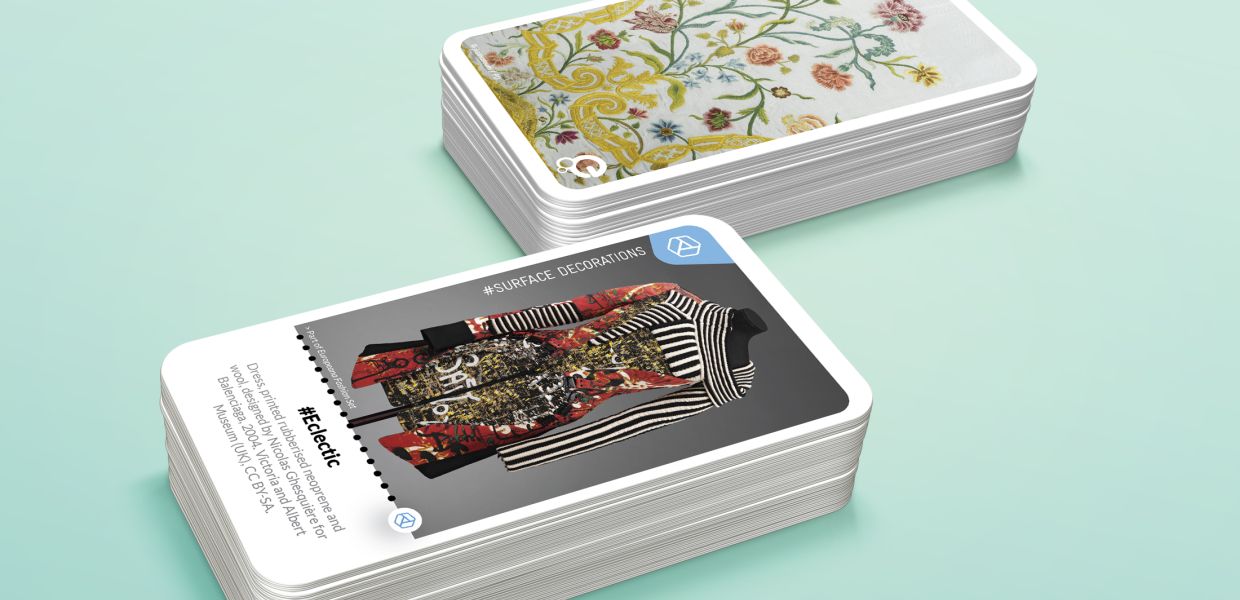Treasure Hunt: Find 12 Re-usable 'Buried Treasures' in your Fashion Collection

Let’s open up our vaults and go on a treasure hunt! Platoniq, with the Europeana Fashion Association and Europeana, is offering a co-creation workshop on 20 April at the Rijksmuseum in Amsterdam.
Under the framework of the Europeana DSI project, participants from cultural institutions will collectively search for uses and re-uses of digital heritage in fashion and cultural heritage. Together, we’ll create prototypes during the workshop, focusing on crowdsourcing as a way to strengthen and develop ideas.
Platoniq wants to see how content holders view, use or imagine using their content, to help us refine our ‘Co-creation made Agile’ methodology (developed by Platoniq as part of the Europeana Creative project) for future re-use workshops. We want to improve access for the re-use of digital heritage, and to satisfy the needs of content holders and the creative re-use community.
Participants have been invited to choose 12 treasures from their collections for re-use. We'll share these collections (using Pinterest boards) and contextualize the results, looking at publishing and licensing issues. See Platoniq’s example.
To help with the selection process, we have created a graphical guide on the relevance criteria.
This guide offers selection criteria: Visual Impact, Data Accuracy, “Is it shareable?”, and Ranking. Each category has a “yes/no” field; the more “yes” answers, the greater the relevance.
1. Visual Impact
Each photo must tell a story. Does it communicate something? Does it have historical relevance? Does it convey a quality of rarity? Can it engage people? Is the subject clear, direct? Is it 'striking'? We’ll also evaluate things like resolution, colour quality, and other technical criteria.
2. Data Accuracy
Verifying attribution data accuracy is crucial. Names must be detailed; authors, people or places must be identified. Items need a date and short description.
3. Is it shareable?
Can the image be shared? To what extent? For licensing compliance, we must evaluate these categories: Open licence (or Public Domain), Creative Commons (with an increasing order of restrictions), and Copyright.
Here's a thorough explanation of examples that use different forms of Creative Commons licenses if you’d like to learn more.
Europeana and the DPLA (with Creative Commons, Kennisland and other key stakeholders from Europeana’s Network) have recently launched Rightsstatements.org. This site provides 11 standardized rights statements created for cultural heritage institutions, making it easier to see if and how cultural objects can be re-used
4. Ranking
We’ll review the voting as we select images, and see if higher ranking on “shared emotions” reveals more attractive images.
Ranking scale:
- 12+ ......VERY RELEVANT
- 8 - 11 ...RELEVANT
- 4 - 7 .....NOT VERY RELEVANT
- 1 - 3 .....IRRELEVANT
Results will guide participants with challenges like scenario planning, collective decision-making, defining personas, their relation to cultural objects, and group design/visual definition of ideas. Each participant’s collection will be compared with the Europeana Publishing Framework. The higher the quality of information, the more benefit they’ll create.
Platoniq has done its homework! With the Europeana Fashion association, we’ve created a beautiful set of printed cards (online soon). If you want to be part of this premiere (and get this set of pictures), you’ll have to come to Rijkmuseum on 20 April. Each participant will receive one of these collector’s items!
So...are you a designer? A developer, maybe? An artist, cultural manager, creative, techie or marketing expert? Take a day to let your imagination flow, and join us at the Europeana Fashion workshop!
If you can’t join us, you can still participate: create your “12 treasures” Pinterest board, and share it with the @Platoniq Pinterest account.
